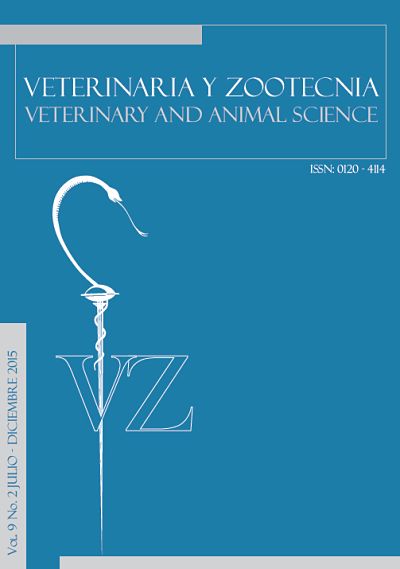Authors
Abstract
Canine demodicosis is a dermatopathy caused by normal inhabitants of the skin flora of dogs, such as mites (Demodex spp), being determined by the exponential increase compared to the normal number of mites. Overpopulation of mites may be related to the development of mild to severe dermatitis or irregular hair loss, with a high predisposition in situations where the animal is immunosuppressed and being acquired or congenital. Fluralaner is a long-acting systemic insecticide and acaricide of the family of isoxazolines approved by the FDA for the treatment of fleas and ticks. Case report. A 4-year-old male French poodle, fed with commercial balanced concentrate, weighing 11 kg. The general clinical examination presents normal physiological constants, showing relevant findings as the presence of erythema and alopecia in the distal area of the four members, perianal area, tail tip, inner ear face, cheilitis, periocular area and nasal bridge. Adult and young mites (Demodex canis) and their respective eggs were detected in the skin scraping, determining the definitive diagnosis as generalized canine demodicosis. Treatment with fluralaner (Bravecto ® 500 mg), baths with shampoo based on chlorhexidine 3%, and food supplement based on omegas and vitamin E was established. Conclusion. Fluralaner administered orally for the treatment of generalized canine demodicosis is highly effective; clinical improvement was observed a few days after its administration and verified by skin scraping in the controls, being a very good alternative as treatment for its ease of administration and its high Efficiency with only one dose.
Keywords
References
Bourdeau, P. Variation in size in Demodex canis: From the longest to the shortest forms. Veterinary Dermatology, v. 21, p. 213, 2010.
Chávez, F. Case Report of Afoxolaner Treatment for Canine Demodicosis in Four Dogs Naturally Infected with Demodex Canis.International Journal of Applied Research in Veterinary Medicine, v. 14, n. 2, p. 123-127, 2016.
Espinosa, A.; Correa, J.; Dussan, C. et al. Caso Clínico Laica Milagros.Revista Facultad de Ciencias Agropecuarias, v. 6, n. 2, p. 41-45, 2014.
Fourie, J.; Liebenberg, J.; Horak, I. et al. Effcacy of orally administeredfluralaner (Bravecto™) or topically applied imidacloprid/moxidectin (Advocate®) against generalized demodicosis in dogs. Parasit Vectors, v. 8, p. 187, 2015.
Garcia, S.; Da Cruz, M.; Garay, B. et al. Demodicose generalizada adulta e juvenil: relato de dois casos. Veterinária e Zootecnia, v. 22, n. 3, p. 386-391, 2015.
González, J.; Moral, Y.; Sánchez, M. Eficacia terapéutica de fluralaner en la demodicosis generalizada del perro. Revista Consulta, v. 237, n. 222, p. 43-46, 2016.
Koch, S. Updates on the Management of Canine Demodicosis. Today’s Veterinary Practice Journal, v. 7, n. 1, p. 77-85, 2016.
Mueller, R. Treatment protocols for demodicosis: An evidencebased review. Veterinary Dermatology, v. 15, n. 2, p. 75-89, 2004.
Mueller, R.; Bensignor, E.; Ferrer, L. et al. Treatment of demodicosis in dogs: 2011 clinical practice guidelines. Veterinary Dermatology, v. 23, n. 2, p. 86-96, 2012.
Paradis, M. New approaches to the treatment of canine demodicosis.Veterinary Clinics of North America: Small Animal Practice, v. 29, n. 6, p. 1425-1436, 1999.
Pereira, A.; Pereira, S.; Gremiao, I. et al. Comparison of acetate tape impression with squeezing versus skin scraping for the diagnosis of canine demodicosis. Aust Vet J, v. 90, p. 448-450, 2012.
Saridomichelakis, N.; Koutinas, A.; Farmaki, R. et al. Relative sensitivity of hair pluckings and exudate microscopy for the diagnosis of canine demodicosis. Vet Dermatol, v. 18, p. 138-141, 2007.
Six, R.; Becskei, C.; Mazaleski, M. et al. Efficacy of sarolaner, a novel oral isoxazoline, against two common mite infestations in dogs: Demodex spp and Otodectes spp. Veterinary Parasitology, v. 222, p. 62-66, 2016.

 pdf (Español (España))
pdf (Español (España))
 FLIP
FLIP














